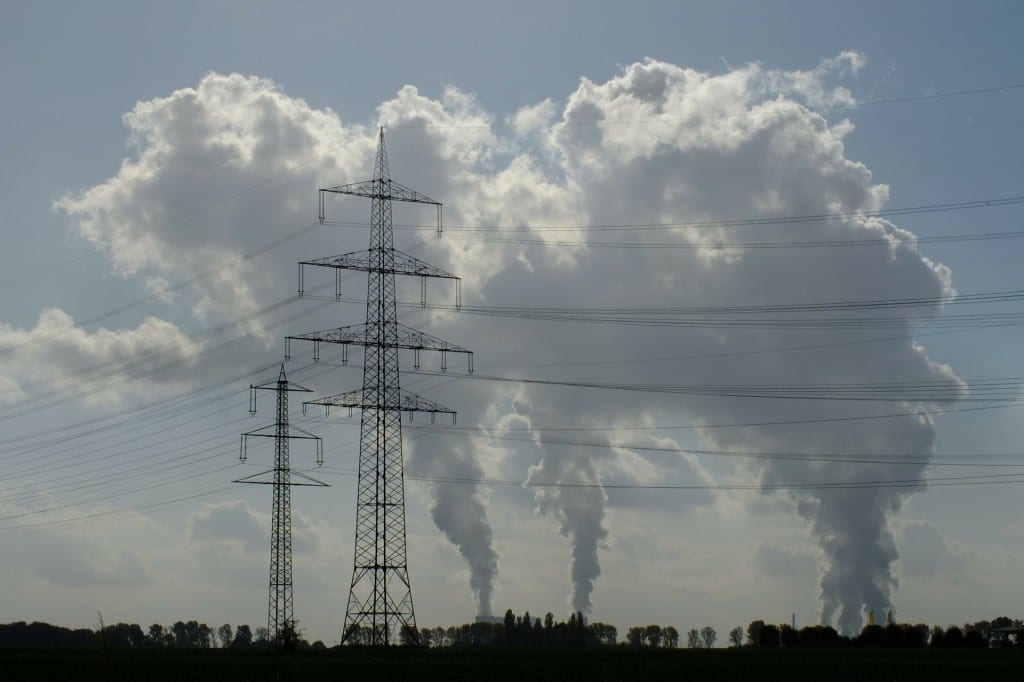Can country-led decarbonisation efforts help achieve a 2⁰C pathway? Henri Waisman’s message is inspiring and positive
By ucftcpj, on 19 October 2015
19 – 25 October marks the inaugural Global Climate Change Week (#GCCW). GCCW is a new initiative designed to encourage academics in all disciplines and countries to engage with their students and communities on climate change action and solutions. UCL IEDE, UCL-Energy, UCL ISR and UCL ISH academics and students will be holding events and blogging through the week to share thoughts and ideas for the future.
Henri Waisman’s message was inspiring and positive at the Deep Decarbonisation Pathways Project (DDPP) seminar on 6th October, chaired by the UCL Energy Institute’s Professor Neil Strachan. Dr Waisman, who is Director of the DDPP at French think-tank IDDRI, described how research groups in 16 countries, together responsible for 74% of total emissions, have set out concrete, technically feasible pathways to deep reductions in carbon emissions.
First Dr Weissman set out the scale of the challenge – to meet the 2 degrees target agreed in Copenhagen in 2009, we need to reduce carbon emitted per unit of GDP by 90%, and emissions must peak by 2020. It is clear that this requires profound changes, not just marginal adjustments.
The pathways are country-specific, taking into account current infrastructure, natural resources and socio-economic development. Whilst all of the pathways assume that energy demand reduction and decarbonisation of energy supply are equally important, each country puts forward a different approach. So Germany for example will not include nuclear or carbon capture and storage (CCS) in its energy supply whereas India, in contrast, where coal will still be an important part of the energy mix even by 2050, will rely on CCS.
As well as technical feasibility, the Deep Decarbonisation project also looks at the question of costs. Here the answer is somewhat reassuring – although some additional investment is needed, mostly it is a story of re-allocation of resources, away from fossil fuels and towards renewable energy, electrification and new technologies.
Whilst the project sets out concrete pathways to achieve ambitious goals, most countries recognise that the real challenge is in implementation. For developing countries there is the issue of who pays – how much will developed countries contribute to the investments needed for renewable energy and associated infrastructure? For developed countries there are big challenges in energy demand reduction – for example how do you incentivise homeowners and landlords to further increase home energy efficiency? One of the challenges common to all countries is that significant costs must be incurred now for benefits achieved over a much longer time period. A good example of this is investment in the commercial rollout of CCS – a technology that many countries are depending on in order to carry on using fossil fuels. And yet another challenge is to ensure that countries do not lock themselves into technologies that deliver carbon reductions in the short term, but are poor alternatives to renewables in the longer term.
Henri Waisman’s clear message is that to successfully address these challenges, there has to be genuine commitment by governments to meet the 2 degrees target. In that way the private sector will have the confidence to invest. There needs to be consistent policy – one of the difficulties in many countries, most notably in the UK in recent months, has been policy reversals, which have undermined investor confidence. International co-operation is also essential, one of the real benefits of the project is that it clearly identifies areas where international co-operation will make a difference.
Uppermost in the minds of most of the audience was of course the Paris COP21 climate talks. In contrast to previous international negotiations the COP21 talks start with national contributions (INDCs) representing each country’s ‘offer’ on carbon reduction. Clearly the DDPs, drawn up by researchers independent of government, have a useful role in assessing how ambitious the INDCs are. Dr Waisman also drew our attention to the need for COP21 targets to be dynamic, and how the DDPs will inform how further decarbonisation can take place, identifying the challenges up front.
Following Henri Waisman’s presentation there were interesting interventions by Professor Yacob Mulugetta, Professor of Energy and Development Policy at UCL and Fergus Green, a climate and policy researcher at LSE. Professor Mulugetta emphasised the importance of Africa – its emissions are growing sharply as further development and urbanisation takes place, and it would be useful to include more African countries in the DDP project. He also made an excellent point about the interconnections between different countries pathways – China’s carbon emissions depend strongly on the consumption of Europe and the US.
Fergus Green gave two reasons to be optimistic, and one to be a bit less positive. On the plus side, Chinese emissions are expected to peak earlier than previously thought, possibly by 2025 and they will be introducing a national emissions trading system in 2017 (see China Carbon Forum report). Secondly Fergus Green said that humankind had consistently underestimated the speed of technological development, and there’s no reason to believe this isn’t the case with energy technology as well. But he echoed Dr Waisman’s points around the challenges – particularly the political will to invest upfront.
This was the first UCL seminar I attended – and it was a very thought-provoking discussion.
 Close
Close


